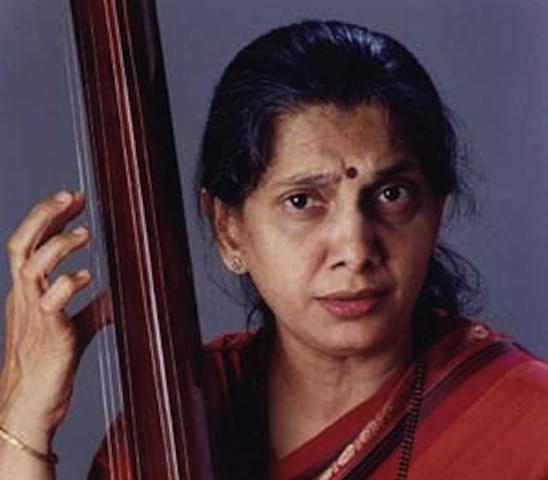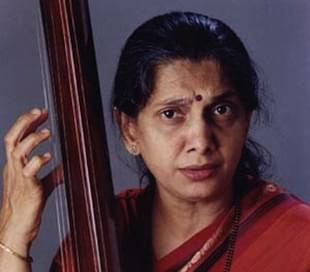Culture
Veena Sahasrabuddhe (1948-2016)
Raja Pundalik
Jul 03, 2016, 12:46 PM | Updated 12:46 PM IST
Save & read from anywhere!
Bookmark stories for easy access on any device or the Swarajya app.


She burst onto the music scene sometime in the mid-1980s, and there was no looking back. But it wasn’t as if music connoisseurs did not discover Veena Sahasrabuddhe (née Bodas) till then. She had already won the national competition for classical vocal music organised by All India Radio for artists under 25 years of age in 1972. It was just that she shied away from giving public performances. It is said that Pt. Bhimsen Joshi, during one of his visits to Kanpur where the Bodas family was based, heard her sing and invited her to perform at the iconic Sawai Gandharv Mahotsav in Pune.
Born in a family steeped in the glorious tradition of Gwalior Gharana (one of the oldest Khyal Gharanas) music, Veena tai was brought up on the staple diet of hard-core classical music. Her father Pt. Shankarrao Bodas was a disciple of the great Pt. Vishnu Digambar Paluskar, and brother Pt. Kashinath Bodas was also a true Gwalior torchbearer. Veena tai trained under both of them, understanding the true nuances of Gwalior gayaki.
Bodas family’s home was a favourite camping place for all musicians. Almost all greats in classical music enjoyed the family’s hospitality while in Kanpur or Allahabad. Interactions with so many greats during that impressionable age had a great impact on Veena tai’s musical journey. The eclectic nature of her performances in her later years bears a strong testimony to this impact.
Here’s a typically-Gwalior serene, well-laid-out Yaman by Veena tai rendered live in a concert. Enjoy the taan patterns that are uniquely Gwalior and a tarana that never fails to lift you.
Elder brother Pt. Kashinath Bodas was also highly enamoured by Pt. Kumar Gandharv’s gayaki and planted some of those seeds also in the younger sister’s training. It is, therefore, not very surprising that Veena tai soulfully rendered Nirguni Bhajans in her unique style. Listen to an intense Kabir bhajan, culled from a concert recording:
Veena tai was later groomed further by Pt. Balwantrai Bhatt (who also composed prolifically under the nom de plume ‘Bhav-Rang’), Pt. Vasantrao Thakar and Pt. Gajananbuwa Joshi. Pt. Bhatt trained under Pt. Omkarnath Thakur (another of Pt. VD Paluskar’s legendary disciples) while Pt. Vasantrao Thakar received taleem from his father in the Gwalior tradition. All this training helped make Veena tai’s gayaki more inclusive with subtle shades of Jaipur & Kirana gayaki.
Moreover, Pt. Balwantrai Bhatt-ji had a fondness for layakari (mesmerising experimentation with the meter during a performance), and Veena tai blended this layakari with Pt. Bhatt-ji’s bandishes in her performances to the delight of her listeners. That is where some of her most enchanting bandishes set to Ada-Chautal come from.
Here’s one bandish in Raag Megh rendered by Veena tai in her inimitable style:
It is also interesting to note that Veena tai was trained extensively on tabla and could play it well while teaching her students. She also trained in Kathak but later decided to make music her career.
Post-marriage, while her husband taught engineering subjects at IIT Kanpur, she started sessions on the appreciation of music for the students and faculty on the campus. She also trained a student choir there and staged a few wonderful performances. While she thus stayed close to the younger generation, it also encouraged her to look critically at forms of music other than Indian classical. She listened to jazz and compositions of Mozart-Beethoven from Western Classical music and experimented with it.
Veena tai, in fact, even performed with Patricia Rozario (Mumbai-born British Soprano) at the Darbar Festival in London. Here is a glimpse of Raag Chhayanat from that performance:
Once Veena Sahasrabuddhe performed at the Sawai Gandharv Music Fest in Pune, her concert diary was constantly busy. She performed in almost all prestigious music conferences in India and many locations across the world. She was, however, a teacher at heart and kept coming back to devote more and more time to her students.
She held the position of the Head of Music Department at SNDT University, Pune. She brought her incisive vision and impeccable performance skills to the world of academia and enriched the students’ learning experience. Some of her students during her stint at SNDT give complete credit to her innovative approach and hands-on, practical approach. She also encouraged her students to learn and appreciate other forms of art, like dance, painting, sculpture, and so on. She always thought that such appreciation of the arts brought more aesthetic quality to the art of presenting music.
Veena tai also did a few thematic experiments successfully, Ritu-Chakra being the most noted one. She also recorded a few beautiful Marathi poems, composing them in familiar Hindustani raags for a landmark album Bhav-Veena. This album received both critical and popular acclaim. Veena Sahasrabuddhe recorded a number of raags (some very wonderful recordings in specially arranged concerts), and the body of recordings she has left behind is substantial.
As for myself, I still vividly remember her early-morning concert in 1984 in Pune’s Garware College auditorium where she sang one of the most enchanting Ahir-Lalit in the first half of the concert and a Madhmad-Sarang in the latter half of the concert. After that, her concerts became a part of my ‘MUST-GO’ list during my student days in Pune.
Although she had been ailing for the past few years and making it impossible for her to perform publicly, her presence was always felt through the performances of her disciples. Now with the body having left this world, it’s her musical soul that would accompany us for the rest of our lives, like this Bhairavi rendition – how prophetic had Veena Sahasrabuddhe been when she said, “Let your music speak for you…!”
(Featured image via Eric Parker/flickr)
Raja Pundalik is a passionate listener of classical music and has contributed numerous features/articles on music to various publications. He blogs at http://music-fundaaz.blogspot.com and tweets at @rajapundalik





